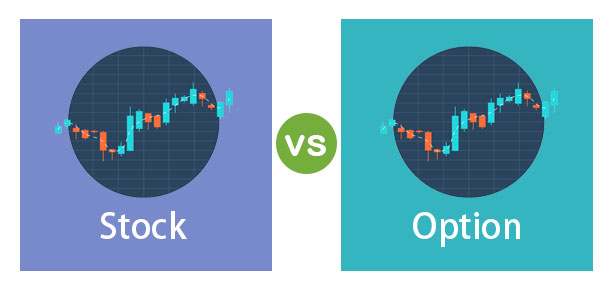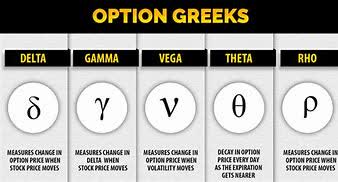With many new investors flooding the market, being sucked in by “get rich quick” schemes, the phrase “options trading” comes up pretty often. As such, I’ve decided to share my ultimate guide to options in 2021, hoping to share my knowledge and help newer and experienced investors avoid making huge mistakes in the market. There have been many cases whereby investors make 10x or even 100x their money in a short period of time thanks to options. Of course, on the flip side, many investors got burnt, blowing their entire account from bad trades. Without further ado, let’s get right into my ultimate guide to options in 2021.
What Are Options?
Options are conditional derivative contracts that allow buyers of the contracts (option holders) to buy or sell a security at a chosen price. Option buyers are charged an amount called a “premium” by the sellers for such a right. Should market prices be unfavorable for option holders, they will let the option expire worthless, thus ensuring the losses are capped at the amount of premium paid. In contrast, option sellers also known as option writers, assume greater risk than the option buyers, which is why they demand this premium.
Options are divided into “call” and “put” options. With a call option, the buyer of the contract purchases the right to buy the underlying asset in the future at a predetermined price also known as the exercise price or strike price. With a put option, the buyer acquires the right to sell the underlying asset in the future at the predetermined price.
It is also good to note that each option contract controls 100 shares so when you are buying 1 contract, you are exposing yourself to 100 shares of the underlying.
Options v. Shares

Many investors would say, why should I buy options when I can just flat out buy the shares directly and have exposure there. The answer is Yes, of course, you can just buy the shares flat out but you are putting on significantly more capital as compared to if you are buying options. If one were to buy 100 shares of Tesla, that would cost around $70,000 whereas if you bought Tesla Call options, it will only cost you a few thousand at best depending on the strike and expiry. The remaining cash could be used more meaningfully to buy other shares or options.
In the following points, I will share 2 simple examples to show the differences between buying options as compared to direct shares.
Buying Calls
When an investor buys call options, they have a bullish view on the stock, be it short-term or long-term depending on the expiry date of the option. Let’s assume an investor wants to invest $2,000 in Palantir (NYSE: PLTR), which trades around $22. The investor can purchase 90 shares for $1,980.
Assuming that the price of Palantir increases by 10% over the next month, the value of the investor’s 90 shares will now be $2,178, a solid $198 gain.
Now if the investor were to buy a call option for Palantir at a strike price of $22 that expires in a month, it costs about $165 ($1.65 * 100 shares). With the original $2,000 capital, the investor can buy 12 contracts for the same $1,980 and because each contract represents 100 shares, the investor is now exposed to 1200 shares with the same cost as compared to just 90 shares.
Assuming that the price of Palantir increases by 10% over the next month, the options will expire “in the money” and will be worth $2.20 per share ($24.20-$22 strike). Based on the 12 contracts or a total exposure of 1200 shares, he will make a profit of $2,640, or a 133% return on capital.
As you can see from the image below, it shows you the at what point does your call options start making money.
:max_bytes(150000):strip_icc():format(webp)/BuyingCalls-7ff771dfbc724b95b8533a77948d7194.png)
Buying Puts
As for buying puts, it’s the exact opposite of buying calls. I’ve also added an image below to show you at what point does your put options start making money and when does it start losing money.
:max_bytes(150000):strip_icc():format(webp)/BuyingPuts-d28c8f1326974c16807f23cb32854501.png)
Understanding Greeks
With options, you will often see some weird values that are not very commonly seen when trading with stocks and other assets. These are what we call, the greeks, consisting of Delta, Gamma, Theta, Vega, and Rho. I will be briefly explaining what each of them means as well as how to interpret them.

Delta: Can be thought of as a probability of something happening. For instance, a 30-delta (0.3 delta) option has roughly a 30% chance of expiring in the money. It also measures the option’s sensitivity to immediate price changes in the underlying asset. The price of a 30-delta option will change by 30 cents if the underlying security changes its price by one dollar. The higher the delta, the higher the probability of the option expiring in the money and the higher its sensitivity is to the underlying asset.
Gamma: Can be thought of as the speed the option is moving in or out-of-the-money. It can also be thought of as the movement of the delta. It will be at its highest when an option is at the money and is at its lowest when it is further away from the money. High gamma values mean that the option tends to experience volatile swings, which is a bad thing for most traders looking for predictable opportunities. A good way to think of gamma is the measure of the stability of an option’s probability.
Theta: Indicates the rate of decline in the value of an option over time. If all other variables are constant, an option will lose value as time draws closer to its expiry. Theta, usually expressed as a negative number, indicates how much the option’s value will decline every day up to its expiry.
Vega: Can be thought of as the measurement of an option’s price sensitivity to changes in the volatility of the underlying asset. Vega represents the amount that an option contract’s price changes in reaction to a 1% change in the implied volatility of the underlying asset. For example, Stock A trades at $6 in May, and a JUN 10 call is selling for $2. Let’s assume that the vega of the option is 0.15 and that the underlying volatility is 25%. If the underlying volatility increased by 1% to 26%, then the price of the option should rise to $2 + 0.15 = $2.15. However, if the volatility had gone down by 2% to 23% instead, then the option price should drop to $2 – (2 x 0.15) = $1.70
Rho: Indicates the rate at which the price of an option changes relative to a change in the risk-free rate of interest. For example, if an option or options portfolio has a rho of 1.0, then for every 1 percentage-point increase in interest rates, the value of the option (or portfolio) increases 1 percent. Options that are most sensitive to changes in interest rates are those that are at the money and with the longest time to expiration.
Risks v. Rewards
Now with every investment, there comes risk and with options being a leveraged instrument, the risks are definitely amplified as compared to just buying the stocks directly. Except in the case of selling uncovered calls or puts, the risk is limited. In buying options, the risk is limited to the premium paid for the option, no matter how much the actual stock price moves adversely in relation to the strike price.
However, options are very time sensitive instruments which means that even though a stock could be going up in the long term, if the short term movement is rocky, the investor can still lose money from their options. Additionally, some investors are more comfortable with a long term investment, adopting a simple “buy and hold” strategy is far simpler and easier to understand than buying options.
Final Thoughts
Personally, I feel that options can be a very good instrument to skyrocket one’s wealth, when used correctly. This is very important because just like trading with stocks, trading options require a lot of patience, understanding the different strategies to adopt, knowing when to use specific strategies and the most important factor, managing your emotions. I hope that with my ultimate guide to options in 2021, it will help new investors better understand this instrument and avoid gambling their capital away on random WSB trades.
Advanced Strategies
In the world of Options, there are tons of strategies that can be used to profit off the market in any situation such as downtrends, uptrends, and even sideways movement. Although some are easy to understand and apply for beginners, a big majority of these strategies do require a certain amount of understanding to not just options but also the greeks (Delta, Gamma, Theta, Vega, and Rho). Moving forward, I will be sharing some of these soon so make sure to watch out for them.
I don’t quite get your point in the example . In this case, wouldn’t you still need to have the money to buy 1200 shares to make that $2k?
What if the investor only have $2k to invest…
The beauty of options is that it allows you to gain a bigger exposure with a smaller capital at risk.
With just $2k, which you can only buy 90 shares with initially, you can get the same exposure as if you had 1200 shares through buying 12 calls.
Pingback: Understanding 2 Important Options Strategies For Beginners